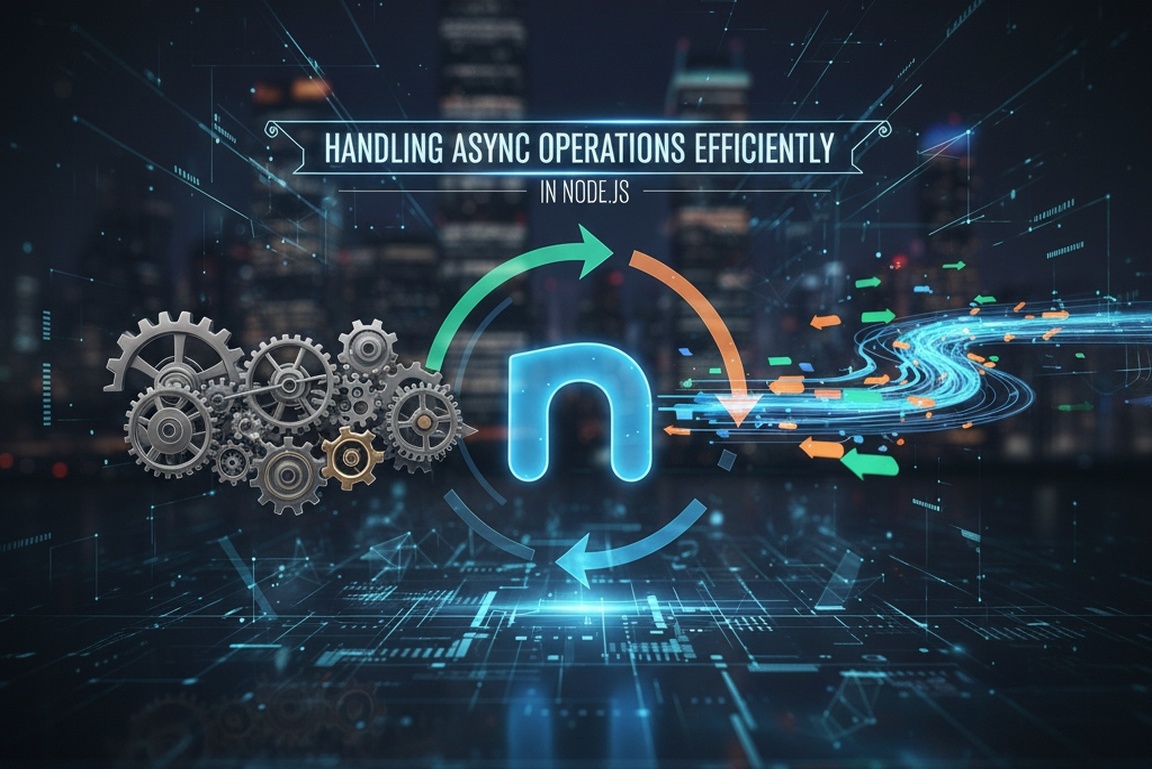
How a BDE Connects Business Vision With Technology
How a BDE Connects Business Vision With Technology Kumkum Kumari 21/11/2025At Speqto, we work with organizations that are constantly evolving entering new markets, scaling operations, or […]


One of the most powerful aspects of Node.js is its ability to handle asynchronous operations. Whether it’s database queries, API calls, or file system tasks, Node.js is designed around non-blocking I/O. However, writing and managing async code efficiently is often a challenge for developers. In this blog, we’ll explore different approaches and best practices to handle async operations effectively in Node.js.
Node.js runs on a single-threaded event loop. This means if you write blocking code, the entire application can freeze. Asynchronous programming ensures that long-running tasks don’t block the event loop, keeping your app responsive and scalable.
Callbacks were the first way Node.js handled async tasks. A function is passed as an argument and executed when the async operation completes. While effective, callbacks often lead to “callback hell” when nested deeply.
Promises solve the callback hell problem by providing a cleaner, chainable syntax. With methods like .then() and .catch(), promises allow you to write more structured async code.
Introduced in ES2017, async/await makes asynchronous code look synchronous. It improves readability, reduces nesting, and is now the most popular way to manage async operations in Node.js.
Node.js provides the EventEmitter pattern to handle async flows. Useful when you need to trigger actions based on events, especially in real-time applications like chat or notifications.
Streams allow processing data in chunks rather than loading everything into memory at once. They are ideal for handling files, large datasets, or live data streams efficiently.
Heavy computations should be offloaded using worker threads or background jobs. Blocking operations reduce concurrency and slow down your app.
When multiple independent async tasks are needed, run them in parallel using Promise.all. This reduces execution time compared to running them sequentially.
Always wrap await calls in try-catch blocks or use .catch() with promises. Proper error handling ensures your app doesn’t crash unexpectedly.
Libraries like async, bluebird, and modern utilities can simplify async workflows, retries, and error management.
Efficient handling of async operations is at the core of building scalable and performant Node.js applications. From callbacks to async/await, each method has its use cases — but choosing the right approach ensures clean, maintainable, and non-blocking code. Mastering async in Node.js will help you unlock its full potential for building modern, high-performance applications.

How a BDE Connects Business Vision With Technology
How a BDE Connects Business Vision With Technology Kumkum Kumari 21/11/2025At Speqto, we work with organizations that are constantly evolving entering new markets, scaling operations, or […]

Apache JMeter Demystified: Your 7-Stage Blueprint for a Seamless First Performance Test
Apache JMeter Demystified: Your 7-Stage Blueprint for a Seamless First Performance Test Megha Srivastava 21 November 2025 In the intricate world of software development and deployment, ensuring a robust user experience is paramount. A slow application can quickly deter users, impacting reputation and revenue. This is where Apache JMeter emerges as an indispensable tool, offering […]

STRIDE Simplified: A Hands-On Blueprint for Pinpointing Software Threats Effectively
STRIDE Simplified: A Hands-On Blueprint for Pinpointing Software Threats Effectively Megha Srivastava 21 November 2025 In the intricate landscape of modern software development, proactive security measures are paramount. While reactive incident response is crucial, preventing vulnerabilities before they become exploits is the hallmark of robust software engineering. This is where threat modeling, and specifically the […]

From Static to Streaming: A Practical Developer’s Guide to Real-time Applications Using GraphQL Subscriptions
From Static to Streaming: A Practical Developer’s Guide to Real-time Applications Using GraphQL Subscriptions Shakir Khan 21 November 2025 The Paradigm Shift: From Static to Streaming Experiences In an era where user expectations demand instant gratification, the web has rapidly evolved beyond its static origins. Today, a modern application’s success is often measured by its […]

The TanStack Query Edge: Deep Dive into Advanced Caching for Optimal Application Speed
The TanStack Query Edge: Deep Dive into Advanced Caching for Optimal Application Speed Shubham Anand 21 November 2025 In the relentless pursuit of seamless user experiences and lightning-fast web applications, data management stands as a formidable challenge. Modern front-end frameworks demand intelligent solutions to handle asynchronous data, and this is precisely where TanStack Query (formerly […]